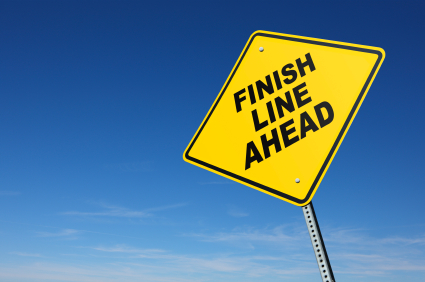A couple of weeks ago, I wrote about, We Keep Missing Our Forecast, Deals Keep Slipping. Much of the reason we miss forecast dates and deals keep slipping can be attributed to two reasons:
- We don’t have a sales strategy and are acting purely in response mode.
- We develop our strategies backwards.
I won’t spend much time on the first area–it’s simply inexcusable, it’s a formula for performance failure. If we don’t have a strategy, then we are driven by responding to the customer–or, more likely, being driven by the competitors sales strategy. In either case, we are offering no leadership, creating no value, or differentiation. We have surrendered the outcome — the only ways to win without a strategy is for the competition to do a much worse job than you, or to win only on price (hmmm—–makes you wonder).
The second is more challenging. We tend to start our planning process from where we are, focusing on identifying the next critical steps and actions. Too often, we focus on what we need to do today, then the next day, then the next….. We work sequentially from where we are, only to find we are running out of time and can’t get everything done by the target date–so we slip it. Or our customers do the same thing… they look one to two steps ahead, with no idea about how to reach the end point at the time they had hoped to–dates get slipped, goals slip.
It’s always hard to meet deadlines and target dates this way. It’s a logical approach, frankly it’s how people are trained. But actually, I think we have to turn the planning process upside down, starting with the end and working backwards.
We have to approach the planning process with the end in mind—when does the customer want to make a decision, when do we want to complete this project? Once we understand the end goal, we develop all our plans by working backwards from that goal. We know our sales process, we know all the activities we must complete to reach the end goal at the target date.
For example, if we are developing our deal strategy and we know the customer wants to make a decision in 60 days, we need to work backwards from that date to sequence our activities in a manner that everything gets done by that deadline. We need to walk through our sales process backwards, knowing that we have to have a proposal in front of the customer by a certain date, knowing that we must complete our discovery (so we can generate our proposal) by another date, and so forth.
Doing this, we have a work plan, some interim milestones and goals–both for ourselves and for our customers–so that we can do everything necessary through the customer buying process and our selling process to achieve our mutual goals and to meet the target date we’ve established.
Ahh, but things aren’t that simple—thing that we and our customers didn’t anticipate pop up—they threaten the target date. We’re tempted to respond to what just happened–then start doing the next thing then the next…..pretty soon we’re back to where we were before—we lost site of our goal and are just focused on the next few steps and actions. Our goals slip, the dates slip, the order we were hoping to get this quarter slips to next quarter, then to the next……
When something pops up, we need to pause, think about our strategy and readjust things. Again, we are most effective starting at the end and working backwards. It may mean we have to get more done in less time–but as much as we can, it’s important for us to meet the target close date.
It’s not always possible to make the target date–sometimes the customer slips their schedule, sometimes things come up that just drive slippage. However, if you always start with the end in mind—working backwards, you will be more likely to achieve the goals you have established then if you start from where you are.

Cool post David,
I recently have been planning and getting my work done this way, as results tend to sprout from end goal in mind. From that point on, it is much easier to trace back and accomplish tasks/visions logistically.
Vitaly, thanks for the comment. It’s always easier to achieve a goal when you start from the goal and work backwards, sequencing everything that has to be done to achieve it.
It’s all about purposefulness.